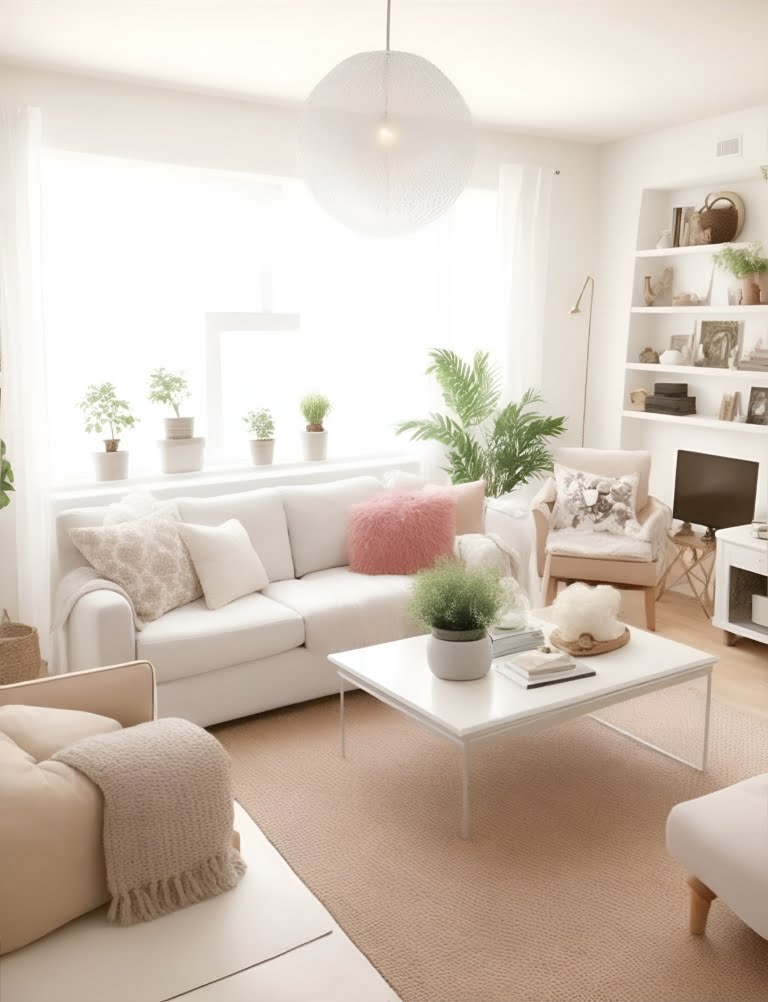Introduction
When it comes to designing your living room, lighting plays a crucial role in setting the mood and ambiance. A well-lit living room can make it more inviting, functional, and visually appealing. However, choosing the right lighting setup can be overwhelming with so many options available. In this comprehensive guide, we will walk you through step-by-step on how to light your living room like a pro, providing expert insights and practical tips to ensure your space shines in all the right ways.
How to Light Your Living Room
Lighting your living room is more than just selecting a couple of lamps. It involves creating layers of light to illuminate different areas effectively and complement your overall decor. Let’s dive into the specifics of how to light your living room.
1. Assess Your Living Room Space
The first step in lighting your living room is to evaluate its size, layout, and natural light sources. Take note of the room’s dimensions and identify any potential dark spots that need extra attention. This assessment will help you determine the number and type of fixtures required to achieve a balanced lighting arrangement.
2. Choose the Right Fixture Types
-
Overhead Lighting: Start with ambient lighting by installing chandeliers, pendant lights, or flush mounts. These fixtures provide overall illumination for the entire room.
-
Task Lighting: Task lights such as floor lamps and table lamps are essential for activities like reading or working on a laptop.
-
Accent Lighting: To add depth and highlight specific features, use accent lighting like wall sconces or track lights.
3. Opt for LED Bulbs
Embrace LED bulbs as they are energy-efficient, long-lasting, and come in various color temperatures. Warm white (2700K to 3000K) bulbs create a cozy atmosphere, while cool white (3500K to 4100K) bulbs are ideal for task areas.
4. Layer Your Lighting
Create a captivating ambiance by incorporating different layers of light:
-
Ambient Lighting: Achieve an even, general glow through overhead fixtures.
-
Task Lighting: Illuminate specific areas for reading, crafting, or other activities.
-
Accent Lighting: Use accent lights to showcase artwork or architectural features.
-
Decorative Lighting: Add decorative lamps or string lights for a touch of style.
5. Utilize Dimmers and Smart Controls
Installing dimmer switches allows you to adjust the brightness according to different occasions and moods. Consider using smart controls for remote operation and automation, adding convenience and energy efficiency.
6. Embrace Natural Light
Make the most of natural light during the day by using sheer curtains or blinds that allow light to filter in. Position mirrors strategically to reflect natural light and make your living room feel more spacious.
7. Consider the Height of Fixtures
The height at which you place fixtures can impact the lighting effect. Chandeliers or pendant lights should hang at least 7 feet above the floor, while sconces should be mounted at eye level for maximum impact.
8. Create Zones with Lighting
Divide your living room into different functional zones and light them separately. This approach adds depth and character to your space while enhancing its usability.
9. Use Lamps as Decorative Elements
Incorporate stylish and unique lamps to serve as both functional and decorative elements. These can become focal points in your living room design.
10. Play with Colors and Shadows
Experiment with colored bulbs or filters to add a dramatic effect to your living room. Be mindful of shadows, as they can create interesting patterns and textures on the walls.
11. Opt for Energy-Efficient Fixtures
Choose fixtures with the ENERGY STAR label or those that have been certified for energy efficiency. This ensures that your living room lighting is eco-friendly and cost-effective.
12. Balance Warmth and Coolness
Achieve a harmonious atmosphere by combining warm and cool lighting. This balanced approach makes the room more inviting and visually appealing.
13. Highlight Artwork and Decor
Use directed spotlights or adjustable track lights to showcase your artwork, sculptures, or any other decorative elements.
14. Pay Attention to Glare
Position your light sources in a way that minimizes glare and reflections on TV screens or other glossy surfaces.
15. Lighting for High Ceilings
If you have high ceilings, opt for fixtures with adjustable rods or cords to bring the light closer to the living space.
16. How to Light Your Living Room in Open Floor Plans
For open floor plans, use lighting fixtures to create boundaries between different living spaces, ensuring each area receives sufficient light.
17. Combine Lighting Styles
Don’t be afraid to mix and match various lighting styles to achieve a unique and personalized look for your living room.
18. How to Light Your Living Room on a Budget
Discover budget-friendly lighting options and creative DIY ideas to light up your living room without breaking the bank.
19. Lighting Safety Tips
Learn essential safety measures to ensure your lighting setup is secure and free from hazards.
20. How to Light Your Living Room for Special Occasions
Transform your living room for gatherings and celebrations by incorporating festive lighting elements.
21. Smart Home Integration for Lighting
Explore the possibilities of integrating your living room lighting with smart home technology for enhanced convenience and automation.
22. Lighting Upgrades: When and How
Know when it’s time for a lighting upgrade and how to go about it efficiently.
23. Lighting Maintenance and Cleaning
Understand the importance of regular maintenance and cleaning to keep your lighting fixtures in top-notch condition.
24. Personalizing Your Living Room Lighting
Tailor your lighting choices to suit your personal preferences and showcase your unique style.
25. Seeking Professional Help
When in doubt or dealing with complex lighting setups, consider consulting with a professional lighting designer for expert advice and solutions.
How to Light Your Living Room – FAQs
Q: What are the best LED bulbs for living room lighting?
- A: Opt for warm white LED bulbs (2700K to 3000K) for a cozy atmosphere.
Q: How can I make my living room appear larger using lighting?
- A: Strategically place mirrors to reflect natural light and create an illusion of more space.
Q: Can I use dimmer switches for LED bulbs?
- A: Yes, many LED bulbs are compatible with dimmer switches; just ensure they are labeled as dimmable.
Q: How many lighting layers do I need in my living room?
- A: Aim for at least three layers of lighting: ambient, task, and accent lighting.
Q: What’s the average cost of upgrading living room lighting?
- A: The cost varies depending on the scope of the upgrade and the fixtures chosen, but it can range from a few hundred to a few thousand dollars.
Q: Is smart lighting worth the investment for my living room?
- A: Smart lighting offers convenience and energy savings, making it a worthwhile investment for many homeowners.
Conclusion
Lighting is a critical aspect of interior design, and when done right, it can transform your living room into a warm and inviting sanctuary. By following the comprehensive guide above, you can master how to light your living room effectively, creating a harmonious and aesthetically pleasing space that suits your lifestyle and preferences.
Remember to experiment with different lighting styles, and don’t be afraid to seek professional advice when needed. With the right lighting setup, you’ll be amazed at how it enhances your living room’s overall atmosphere and functionality.







